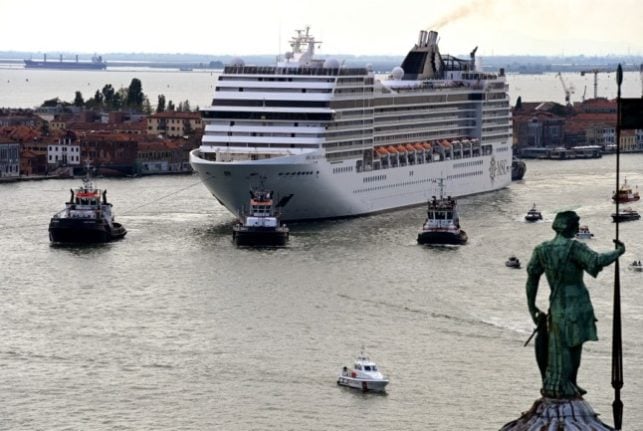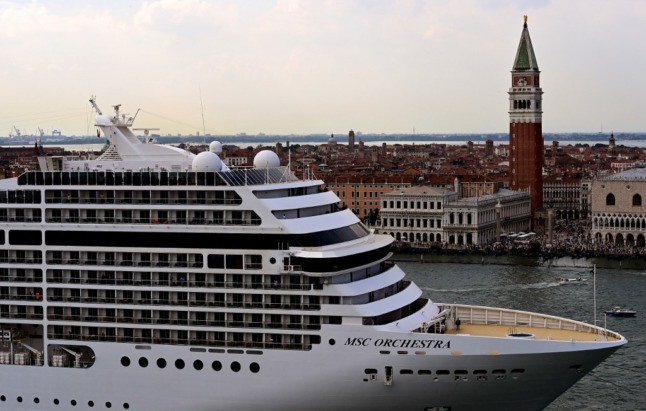The city has been on UNESCO’s heritage list since 1987, but the UN body warned last month of the need for “more sustainable tourism management”, recommending that Venice be added to its endangered list.
The World Heritage Committee meeting in Fuzhou, China, cited Italy’s recent ban and gave Italian authorities until next December to report back on efforts to preserve the city’s ecosystem and heritage.
ANALYSIS: Is Venice really banning cruise ships from the lagoon at last?
Italy’s Culture Minister Dario Franceschini welcomed the decision, but said “attention on Venice must remain high”, underlying the need to identify a “sustainable development path”.
Prime Minister Mario Draghi expressed “great satisfaction” at the decision.
For years, campaigners have been calling for an end to cruise ships sailing past St Mark’s Square.

They say the giant floating hotels cause large waves that undermine the city’s foundations and harm the fragile ecosystem of its lagoon.
But many Venice residents, environmental campaigners and tourism experts have warned that the move would not be as beneficial as it appeared – and could in fact make existing problems worse .
“Yes, it is true that from August 1st cruise ships will no longer pass in front of Saint Mark’s,” stated Venezia Autentica, a group promoting sustainable tourism businesses in Venice.
“However, cruise ships will still enter the Venetian lagoon through the “back door”, hidden from plain sight,” it says.
“They will reach Venice through an existing channel that will be further enlarged to accommodate those ships and will have devastating repercussions on the local environment.”
READ ALSO: ‘The myth of Venice’: How the Venetian brand helps the city survive
According to the government’s ban, the largest ships will be banned from entering the Basin of San Marco, the Canal of San Marco and the Giudecca Canal as of August 1st.
They will be diverted to the industrial port of Marghera, whereas smaller cruise ships, holding about 200 passengers, can continue to reach the heart of the city.
Unesco’s Director General described the move as “very good news and an important step that significantly contributes to the safeguarding of this unique heritage site.”



 Please whitelist us to continue reading.
Please whitelist us to continue reading.
Member comments